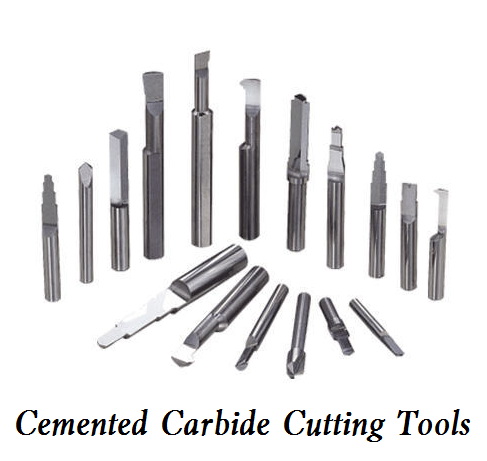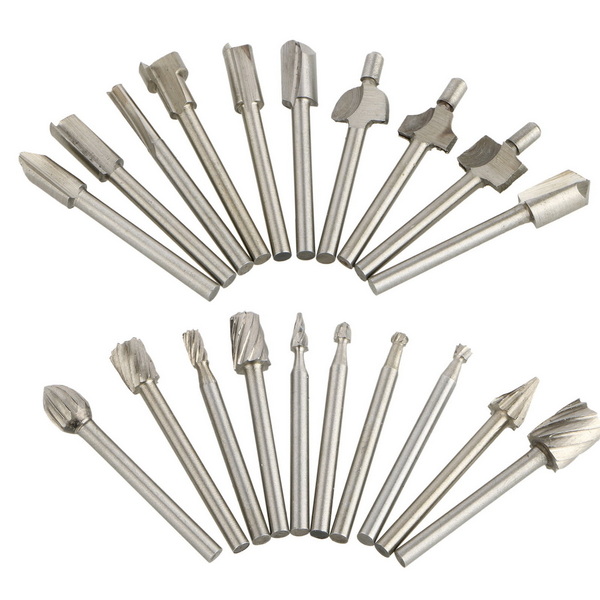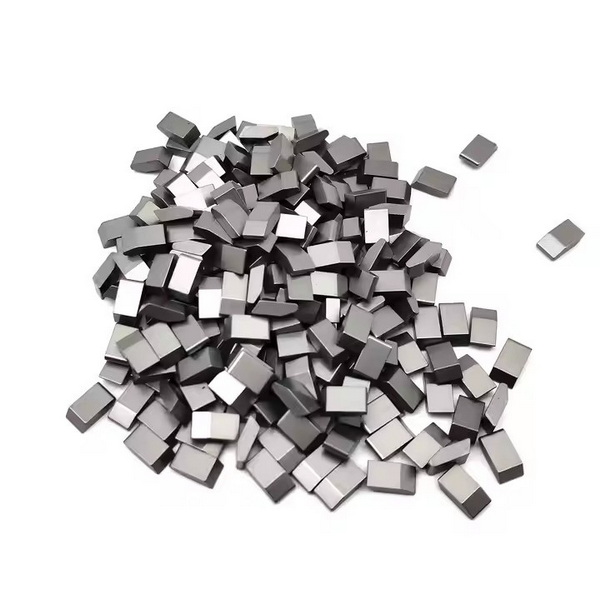Content Menu
● Introduction
● Understanding Tungsten Carbide
>> Properties of Tungsten Carbide
● Understanding Diamond
>> Properties of Diamond
● Can Tungsten Carbide Cut Diamond?
>> Machining Techniques
>> Limitations
● Applications of Tungsten Carbide
>> Common Applications
● Comparison Table: Tungsten Carbide vs. Diamond
● The Science Behind Cutting Hard Materials
>> Mechanisms of Cutting
>> Tool Wear Mechanisms
● Innovations in Tool Design
>> Coatings and Treatments
>> Advanced Manufacturing Techniques
● Conclusion
● FAQs
>> 1. What is the hardness of tungsten carbide compared to diamond?
>> 2. Can tungsten carbide be used for jewelry?
>> 3. What are common applications for diamonds?
>> 4. Is tungsten carbide brittle?
>> 5. How does electrical discharge machining (EDM) work with tungsten carbide?
Introduction
Tungsten carbide and diamond are two of the hardest materials known to man, often used in various industrial applications due to their exceptional hardness and durability. The question arises: Can tungsten carbide cut diamond? This article delves into the properties of tungsten carbide, its applications, and whether it can effectively cut through diamond.

Understanding Tungsten Carbide
Tungsten carbide is an alloy made from equal parts tungsten and carbon. It is renowned for its hardness, which ranges between 7.5 to 9.0 on the Mohs hardness scale. This makes it one of the hardest materials available, second only to diamond, which scores a perfect 10 on the same scale.
Properties of Tungsten Carbide
- Hardness: Tungsten carbide is incredibly hard, making it suitable for various cutting and drilling applications.
- Durability: It is resistant to wear and tear, which enhances its lifespan in industrial settings.
- Brittleness: Despite its hardness, tungsten carbide can be brittle, leading to chipping or cracking under certain conditions.
- Density: Tungsten carbide is also dense, which contributes to its weight and stability during use.
- Corrosion Resistance: It has good resistance to corrosion, making it suitable for harsh environments.
Understanding Diamond
Diamond, composed of carbon atoms arranged in a crystal lattice structure, is the hardest natural material known. Its unique properties make it invaluable in various applications, especially in cutting tools.
Properties of Diamond
- Extreme Hardness: Diamond's hardness makes it ideal for cutting other hard materials.
- Thermal Conductivity: Diamonds excel in dissipating heat, making them useful in high-temperature applications.
- Chemical Stability: Diamonds are chemically inert under most conditions, adding to their utility in various environments.
- Optical Properties: Diamonds have unique optical properties that make them desirable for jewelry and industrial applications alike.
Can Tungsten Carbide Cut Diamond?
The ability of tungsten carbide to cut diamond depends on several factors, including the specific application and the method used.
Machining Techniques
1. Diamond Cutting Tools: Tungsten carbide tools can be equipped with diamond tips or coatings. These tools leverage diamond's hardness to cut other materials effectively. This combination allows for enhanced performance when machining hard materials.
2. Single Point Diamond Turning: This technique involves using a diamond tool to machine tungsten carbide. It has been shown that diamond tools can produce precise surfaces on tungsten carbide by removing material without causing damage. This method is particularly useful in producing intricate shapes and designs.
3. Electrical Discharge Machining (EDM): This method uses electrical discharges to remove material from tungsten carbide. While not directly related to cutting diamond, it highlights the versatility of tungsten carbide in machining applications. EDM can precisely shape tungsten carbide components without direct contact.
Limitations
- Brittleness of Tungsten Carbide: While tungsten carbide is hard, it is also brittle. This brittleness can lead to tool failure when attempting to cut extremely hard materials like diamond.
- Heat Generation: The heat generated during cutting can cause both tungsten carbide and diamond to degrade if not managed properly. Effective cooling systems are crucial during machining processes involving these materials.
- Cost Considerations: While tungsten carbide is less expensive than diamond, the overall cost-effectiveness must be evaluated based on the specific application requirements.

Applications of Tungsten Carbide
Tungsten carbide is widely used across various industries due to its durability and hardness.
Common Applications
- Cutting Tools: Used for drill bits and milling tools that require high wear resistance.
- Jewelry: Popular for wedding bands due to its scratch resistance and aesthetic appeal. The unique finish of tungsten carbide jewelry offers a modern alternative to traditional precious metals.
- Industrial Machinery: Components such as dies and punches benefit from tungsten carbide's strength. In manufacturing processes like stamping or molding, tungsten carbide tools provide precision and longevity.
- Mining and Drilling Applications: Tungsten carbide is extensively used in mining equipment due to its ability to withstand extreme conditions while maintaining performance.
Comparison Table: Tungsten Carbide vs. Diamond
| Property | Tungsten Carbide | Diamond |
| Hardness | 7.5 - 9.0 | 10 |
| Durability | High | Very High |
| Brittleness | Moderate | Low |
| Cost | Generally lower than diamond | Higher cost |
| Applications | Cutting tools, jewelry | Cutting tools, industrial uses |
The Science Behind Cutting Hard Materials
Understanding how cutting occurs at a microscopic level can provide insights into why certain materials work better together than others.
Mechanisms of Cutting
When a cutting tool interacts with a material:
1. Deformation: As the tool applies pressure, the material deforms rather than cuts cleanly.
2. Fracture: For very hard materials like diamond, fracture occurs instead of deformation due to the material's rigidity.
3. Heat Generation: The friction between the tool and workpiece generates heat, which can lead to thermal damage if not managed properly.
Tool Wear Mechanisms
In cutting operations involving hard materials:
- Abrasion: The wear caused by hard particles or surfaces rubbing against each other.
- Adhesion: Material transfer from one surface to another due to high temperatures.
- Diffusion: At elevated temperatures, atoms may migrate between surfaces leading to wear over time.
Understanding these mechanisms helps engineers design better tools that can withstand harsh conditions while maximizing efficiency.
Innovations in Tool Design
With advancements in technology, new methods are being developed to enhance the performance of tungsten carbide tools when working with diamonds or other hard materials.
Coatings and Treatments
1. Diamond Coatings: Applying a thin layer of diamond on tungsten carbide tools improves their cutting efficiency significantly when working with hard materials.
2. CVD (Chemical Vapor Deposition): This process creates a strong bond between the substrate (tungsten carbide) and the coating material (diamond), enhancing durability and performance under extreme conditions.
3. Surface Treatments: Techniques such as nitriding or carburizing improve surface hardness and wear resistance of tungsten carbide tools.
Advanced Manufacturing Techniques
Innovative manufacturing techniques such as additive manufacturing (3D printing) enable the creation of complex geometries that were previously impossible with traditional methods. These advancements allow for more efficient designs tailored specifically for cutting applications involving hard materials like diamonds.
Conclusion
In summary, while tungsten carbide possesses significant hardness and durability, it cannot cut diamond directly due to its lower hardness level. However, when combined with diamond tips or utilized in specific machining techniques like EDM or single-point turning with diamond tools, tungsten carbide can effectively work with or alongside diamonds in industrial applications.
The interplay between these two remarkable materials highlights the importance of understanding their properties and capabilities in various contexts—from industrial manufacturing processes to jewelry design—demonstrating their versatility across multiple domains.

FAQs
1. What is the hardness of tungsten carbide compared to diamond?
Tungsten carbide has a hardness rating between 7.5 and 9.0 on the Mohs scale, while diamond rates a perfect 10.
2. Can tungsten carbide be used for jewelry?
Yes, tungsten carbide is popular for jewelry such as wedding bands due to its scratch resistance and durability.
3. What are common applications for diamonds?
Diamonds are commonly used in cutting tools for industrial applications due to their extreme hardness as well as in jewelry for their aesthetic appeal.
4. Is tungsten carbide brittle?
Yes, while tungsten carbide is hard, it can also be brittle and prone to chipping or cracking under stress if not handled properly.
5. How does electrical discharge machining (EDM) work with tungsten carbide?
EDM uses electrical discharges to erode material from tungsten carbide without direct contact, allowing for precise shaping without damaging the workpiece.
















